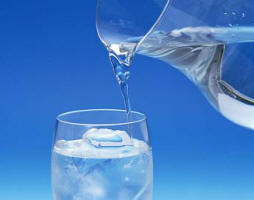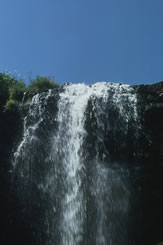 Multiple Antibiotic Resistance Indexing
Multiple Antibiotic Resistance Indexing
Knowledge of the source of drinking water contamination enables the development of suitable programs and strategies. An article in Water Science and Technology: Water Supply describes the use of multiple antibiotic resistance (MAR) indexing to classify sources of microbial contaminant.
The provision of safe drinking water in developing countries continues to be a major challenge. The extent of this problem is largest in rural and peri-urban environments where lack of safe drinking water is often coupled to lack of proper systems for sanitary waste and wastewater disposal. An increase in bacterial contamination (fecal contamination in particular) is not only a problem of developing countries, however, but also of developed countries. In South Africa, the main water quality problem is fecal contamination together with their associated enteric pathogens.
The South African government is currently implementing a national microbial monitoring program for continuous surveillance of all major catchments in the country, aiming to monitor microbial contamination of source waters and to identify catchments with a high risk to health due to fecal contamination. More than 140 catchments have already been identified, most of them in the rural areas where communities lack treated potable water and therefore rely on dams, rivers and streams as their source of water. It appears that the best way to address water quality problems are to safeguard the sources of water from fecal contamination.
Monitoring source water quality requires regular isolation and identification of indicator microorganisms and, in some cases, certain specific pathogens e.g. Giardia spp and C. parvum. This can be time consuming and costly. Knowing the source of contamination, however, makes it possible to develop and implement programs and strategies to effectively control water quality. Methods such as multiple antibiotic resistance (MAR) indexing, chemical detection and genotypic techniques elevate microbial quality monitoring of water to the next level because they can give an indication of the sources of microbial contaminant.
The authors aimed to determine the reliability of the MAR indexing technique in discriminating microorganisms from different sources, in order to trace the sources of fecal contamination in surface water. MAR indexing differentiates between human and non-human sources of fecal contamination in source waters based on differences in antibiotic resistance profiles. This technique is based on the premise that human fecal bacteria will have greater resistance to specific antibiotics than animal sources.
The authors used municipal wastewater to isolate human-derived E. coli. The samples were obtained from the Kwa-Dlangezwa wastewater treatment plant, a small treatment plant serving the University of Zululand community and the neighbouring Kwa-Dlangezwa Township. A farm from the University of Zululand from the department of Agriculture was used to obtain E. coli from domestic animals. For identification and confirmation of E. coli, the colonies were diagnosed by Gram reaction, indole, methyl red, Voges-Proskauer test and Citrate reaction (IMViC test) as well as Hydrogen Sulphite production.
A total of 322 isolates were positively identified as E. coli. About 30% of these were isolated from human sources, another 30% from domestic animals and 40% from wild animals. Accuracy prediction testing was used to measure the ability of the statistical model used to accurately differentiate/classify E. coli according to human and non-human source origins. Results indicate that MAR indexing accurately differentiated E. coli of human origin from non-human origin at the rate of 78%.
The high classification rates are through homogeneity of the antibiotic resistant patterns (ARP) of isolates from individual populations and may also result from tight clustering of the ARP. The authors consider their sampling relevant for the purpose of the study, which was focused on a small area. The authors built a library using their data which enabled them to classify the fecal contaminants according to their sources within the geographic limits of the study. However, they acknowledge that their sampling program was not sufficient to build a larger database of ARP, implying that the database created cannot be used for classification of contaminants in other regions. They conclude that more research is needed to build a national database.
Source: M. S. Mthembu, P. T. Biyela, T. G. Djarova and A. K. Basson. 2010. The use of antibiotic resistance profiling as a means of tracing sources of fecal contamination in source waters. Water Science and Technology: Water Supply, IWA Publishing, 10(2), 209-215.
| Contact information | n/a |
|---|---|
| News type | Inbrief |
| File link |
http://www.waterlink-international.com/news/id1187-Multiple_Antibiotic_Resistance_Indexing.html?utm_source=Newsletter&utm_medium=email&utm_campaign=20100616+WL |
| Source of information | WaterLink International / Water Science and Technology: Water Supply, IWA Publishing, 10(2), 209-215. |
| Subject(s) | ANALYSIS AND TESTS , CHARACTERISTICAL PARAMETERS OF WATERS AND SLUDGES , DRINKING WATER , DRINKING WATER AND SANITATION : COMMON PROCESSES OF PURIFICATION AND TREATMENT , HEALTH - HYGIENE - PATHOGENIC MICROORGANISM , PREVENTION AND NUISANCES POLLUTION , SANITATION -STRICT PURIFICATION PROCESSES , SLUDGES , WATER QUALITY |
| Relation | http://www.iwaponline.com/ws/01002/02/default.htm |
| Geographical coverage | International |
| News date | 17/06/2010 |
| Working language(s) | ENGLISH |
 you are not logged in
you are not logged in





